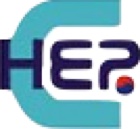APCTP Focus Program in Nuclear Physics 2021 Part II: Science Opportunities with EIC
Hilton Gyeongju
APCTP Focus Program in Nuclear Physics 2021 Part II: Science Opportunities with EIC
Onsite (for domestic) and Online Blended Meeting
19 - 24 July, 2021
Supported by APCTP and CHEP@KNU
https://indico.knu.ac.kr/e/APCTP2021-NP2
ZOOM Registration Link: https://zoom.us/meeting/register/tJAude2gqz0rH9Y-ftX1TT_JElNqRPi9OZNF
Gyeongju Hilton, Cherry Room (B1)
It is well known that charged leptons are ideal probes to investigate the internal structure of hadrons and nuclei. In fact, many cutting-edge accelerator facilities have been constructed for this purpose and still many world- leading facilities are leading the research in this area. These investigations become even more interesting in view of the somewhat puzzling results about the spin structure of the nucleon in deep inelastic scattering. It is one of the topics to be explored at the proposed facilities like the Electron Ion Collider (EIC) that is to be constructed at the Brookhaven National Laboratory of the US. The advent of such a new generation of high-energy, high-intensity electron accelerators opens a new frontier of coincidence experiments with polarization degrees of freedom. Such investigations will provide precise form factors of proton and neutron over a large range of momentum transfer. Therefore, the nucleon tomography will become available and this will bring us clues to understand the fundamental nature of the strong interactions. The parity-violating scattering of polarized electrons is also expected to give us first direct informations on the strangeness inside the nucleon and its contribution to the charge and the magnetization distributions. In this program, we will focus on the problem of the nucleon structure that is revealed through the generalized parton distributions functions. Another topic to be addressed in this program is the physics of resonances. There are a lot of resonance predicted by many theoretical models but their discovery is far from complete. The role of the resonances is expected to be crucial to understand hadron reactions at the energy of around 2 GeV. There have been recent data accumulated at the JLab and many theoretical interpretations have been suggested. These topics will help us understand the electroweak structure of the nucleon and nuclei.
Major recent research topics include
(a) the mapping of the 1-D and 3-D momentum and spatial distributions of partons within mesons and baryons and the accessing of the components of the hadron energy-momentum tensor in terms of mass, spin, and pressure distributions,
(b) exploring the dynamics and impact of hadron mass generation with nucleon elastic, N ---> N* transitions, and meson elastic/transition form factors and parton distribution amplitudes, and
(c) searching for new states of hadronic matter including the so-called hybrid mesons and baryons. Impressive progress in relating the hadron structure observables to the strong QCD mechanisms was achieved from the ab initio QCD description of hadron structure to a diverse array of methods in order to expose emergent phenomena via quasi-particle formation.
This program covers experimental and theoretical topics in the areas of nuclear and hadronic physics serving as a forum for contacts and discussions of current and future developments in this field. In order to encourage the vast exchange of even tentative information, ample time for discussion will be given. For this purpose, all the talks are invited and controlled by the organizers.
We suggest people in Korea to attend the meeting in person and international participants to join online (via ZOOM). The ZOOM link will be emailed to registered participants. 사회적 거리두기의 새로운 기준에따라 직접 참석이 가능함을 알려드립니다.
This workshop is a companion workshop of "The 2nd Meeting on PSQ@EIC" (Click the sidebar menu to visit the website.). The PSQ@EIC Meeting will be held in the evening in the Korean timezone to offer a chance to attend to those who reside in the US or in Europe. Therefore, the APCTP Focus Program will be held during afternoon in the same period.
Supported by
Asia Pacific Center for Theoretical Physics

Center for High Energy Physics, Kyungpook National University


